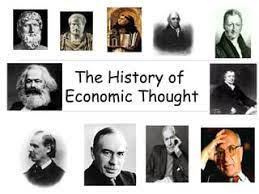5. Communication and Academic Writing
|
Course Name |
Communication and Academic Writing |
|||||
|
Type of Course |
Core |
|||||
|
Course Code |
KNM21C05 |
|||||
|
Course Summary & Justification |
Students seeking a career in economics are expected to display critical thinking skills, construct an argument based on evidence, and demonstrate practical reasoning in all written work. As such, a high level of both written and oral communication skills is required of all economic majors. This course would provide the opportunity to practice these skills through various methods. |
|||||
|
Semester |
1 |
Credit |
4 |
|||
|
Total Student Learning Time (SLT) |
Learning Approach |
Lecture |
Tutorial |
Practical |
Others |
Total Learning Hours |
|
|
Virtual learning Collaborative learning Blended learning |
65 |
5 |
- |
50 |
120 |
|
Pre-requisite |
NIL As per the requirement of the course |
|||||
|
Others- Library, seminar and assignment preparations, tests. |
||||||
COURSE OUTCOMES (CO)
|
CO No. |
Expected Course Outcome |
Learning Domains |
PSO No. |
|
Upon completion of this course, students will be able to; |
|||
|
1 |
Understand and apply different methods of communication appropriately in different personal as well as business situations with brevity and clarity. |
U, A |
4,6,7 |
|
2 |
Analyse and demonstrate a good understanding of research approaches and information collection, developing and delivering effective presentations and reports while making optimum use of correct vocabulary and grammar. |
An |
4,6,7 |
|
3 |
Apply critical thinking skills, construct an argument based on evidence, demonstrate practical reasoning and clarity in all written work to produce letters, memos, notices etc and prepare reports as per requirement. |
C, A |
2,4,7 |
|
4 |
Develop effective interpersonal and language/speaking skills and cross-cultural awareness necessary for contributing to satisfying personal, social and professional relationships. |
C, S |
6,7 |
|
5 |
Develop speaking skills in making oral presentations and negotiations for gaining and keeping audience attention, both national and cross-cultural. |
A,An,E,C |
6 |
|
*Remember (R), Understand (U), Apply (A), Analyse (An), Evaluate (E), Create (C), Skill (S), Interest (I) and Appreciation (Ap) |
|||
COURSE CONTENT
|
|
Hrs |
CO.No. |
|
|
UNIT 1 – Language and communication |
12 Hrs |
||
|
1.1 |
Communication--Types of communication |
2 |
1 |
|
1.2 |
Process and barriers to communication |
2 |
1 |
|
1.3 |
Difference between formal and informal Communication |
2 |
1 |
|
1.4 |
Identification of intonation pattern: statements, questions and exclamatory sentences etc |
2 |
1 |
|
1.5 |
Communication for inter personal influences, Cross cultural communication |
2 |
1,4 |
|
1.6 |
Strategies for improving communication effectiveness |
2 |
1,3,4 |
|
UNIT 2 - Listening Skills |
8 Hrs |
||
|
2.1 |
Listening to presentations, conversations, speeches, discussions, interviews and debates. |
3 |
1,4 |
|
2.2 |
Listening to announcements. |
3 |
1 |
|
2.3 |
Aural comprehension both global and local. |
2 |
1 |
|
UNIT 3- Verbal and non-verbal communication in business. |
15 Hrs |
||
|
3.1 |
Speeches and presentations—Making a presentation—Preparing the text—Using visual aids |
3 |
1,3 |
|
3.2 |
Dialogue skills—Telephone Etiquette |
3 |
1,3 |
|
3.3 |
Public speaking skills, seminar presentations, group discussions and debates, extempore speaking, Jam(just a minute) |
3 |
1,3 |
|
3.4 |
oral reports-Role of audio visual aids and computers in oral presentations |
3 |
1,3,4 |
|
3.5 |
Art of negotiation, Mannerisms and Body language. |
3 |
1,3,4 |
|
UNIT 4 – Writing skills |
18 Hrs |
||
|
4.1 |
Structures and methods of written communication |
2 |
2,3,4 |
|
4.2 |
Writing process—writing formal and informal |
2 |
3,4 |
|
4.3 |
Different kinds of writing—writing paragraph, essays, seminar papers-- summary and précis writing |
3 |
1,2,4 |
|
4.4 |
Letter for different kinds of situation |
3 |
1,2,3,4 |
|
4.5 |
Principle of sequencing points in a hierarchy—common errors in writing |
2 |
3 |
|
4.6 |
Some other types of writing—Notices-Reports—Memos—Agenda— Proposals—Minutes—Preparation of resume |
3 |
2,3 |
|
4.7 |
Academic report writing . |
3 |
2,3 |
|
UNIT 5 – Reading and speaking |
12 Hrs |
||
|
5.1 |
Different types of reading—Critical reading --role of grammar in reading: articles, nouns, verbs, adverbs, adjectives . |
3 |
2 |
|
5.2 |
How to interpret punctuation marks—difference between passive and active vocabulary. |
2 |
2 |
|
5.3 |
How to start a conversation (especially with strangers) |
1 |
1,3,4 |
|
5.4 |
Speaking on different occasions—interview skills, Group discussions |
3 |
4,5 |
|
5.5 |
Types of speaking (ceremonial, demonstrative , informative, persuasive etc) |
3 |
4,5 |
|
Teaching and Learning Approach |
Classroom Procedure (Mode of transaction) Authentic learning, case-based learning, collaborative learning, seminar, group activities. |
||||
|
|
CD |
Course Delivery methods |
|
||
|
CD1 |
Lecture by use of board and online mode |
||||
|
CD2 |
Tutorials/Assignment |
||||
|
CD3 |
Seminars |
||||
|
CD4 |
Role plays |
||||
|
CD5 |
Teaching aids ( videos) |
||||
|
CD6 |
One-on-One interviews / Group discussions |
||||
|
|
|
CD7 |
NPTEL materials / IELTS material (Reading,Listening, speaking, and writing skills) |
|
|
|
Assessment Types |
Mode of Assessment · Continuous Internal Assessment (CIA) · Seminar Presentation – a theme is to be discussed and identified to prepare a paper and present in the seminar · Assignments on reviews of articles and any one book · End Semester examination |
||||
|
|
Course Outcome |
Course Delivery Method |
|
||
|
CO 1 |
CD 1, CD2, CD 7 |
||||
|
CO2 |
CD 1, CD4, CD 5, CD7 |
||||
|
CO3 |
CD1, CD2, CD3, CD7 |
||||
|
CO4 |
CD 1, CD4, CD5, CD6, CD7 |
||||
|
CO 5 |
CD3, CD4, CD6, CD7 |
||||
References:
Text Books
1. Mary Ellen Guffey(2005), Business Communication:Process and Product, 5e, South-Western Thomson Publishing, Mason OH.
2. Namita Gopal(2009), Business Communication, New age international publishers, New Delhi.
3. Sharma R.C. and Krishna Mohan(1996), Business Correspondence and report writing, Tata McGraw-Hill Education, India.
4. M K Sehgal and V. Khetrapal(2006), Business Communication, Excel Books, India.
Further Reading
1. Kitty O Locker, Stephen, Kyo Kaczmarek (2006), Business Communication: Building Critical Skills, Tata McGraw Hill, Mumbai.
2. Rai Urmila and Rai S.M (2010), Business Communication, Himalaya Publishing House, Mumbai Edn.
3. Mottet, Bauer, Houser (2012), Your Interpersonal Communication, Pearson, Boston.

- Teacher: Dr. Johney Johnson .
- Teacher: Smt. Asha T A

- Teacher: Dr. Johney Johnson .
- Teacher: Faseela Ismail .
- Teacher: Dr. Mathew Kurian V
- Teacher: Dr. Johney Johnson .
- Teacher: Sri. Jacob N C
- Teacher: Dr. Johney Johnson .
- Teacher: Dr.Jose J Naduthotty
- Teacher: Dr. Muraleedharan S.
- Teacher: Dr. Johney Johnson .
- Teacher: Dr. Muraleedharan S.